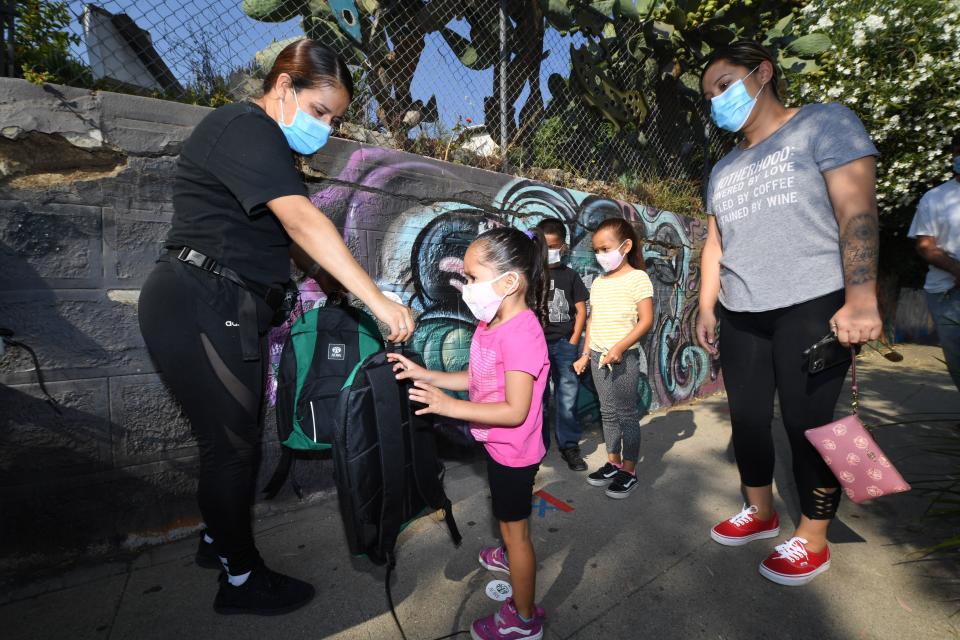Parents brace for costly back-to-school spending as education stays virtual
As the coronavirus pandemic extends into fall, parents of school-aged children face a new set of costly challenges that is hurting their financial security.
Since the outset of the pandemic, 1 in 4 parents has taken on debt to buy tech devices, so their children could attend school virtually. Another third of parents do not feel financially prepared to pay for school-related necessities for the new school year, according to new survey conducted in July of more than 1,000 parents from Credit Karma.
“It's not surprising that people are willing to go into debt for their children,” Colleen McCreary, chief people officer at Credit Karma, told Yahoo Money. “The virtual environment has created an amount of spend that caught parents completely off guard certainly last spring, and now going into the fall, [they] are trying to do whatever they can to do what's best for their kids.”
The spending during the COVID-19 crisis has also exacerbated socioeconomic inequalities, disproportionately affecting low-income families and leaving long-term “lingering effects” on the economy, McCreary said.

Debt by the numbers
Almost 4 in 5 parents said they will foot the majority of the bill for their children’s at-home school supplies this upcoming school year. That bill will likely be bigger than previous school years.
Families with school-age children plan to spend an average of $790 per family this year, up 13% from the $696.70 they spent in 2019, according to the National Retail Federation.
For some parents, that will only add to the ballooning debt they incurred in the spring. Of parents who took on debt this year to support their kids’ at-home education, 43% racked up $100 to $500 in debt, 22% have between $501-$1,000 in debt, and 25% are carrying more than $1,000 in debt.
McCreary expects to see “continued increase in debt over time,” citing a breakdown in talks in D.C. for continued stimulus relief, including extending the additional $600 in weekly unemployment benefits provided under the CARES Act that has now expired.
“Unfortunately we have a history in the United States of people not paying attention to their debt and making hard decisions around what bills they need to pay and the order of which they need to pay them,” McCreary said.

Lack of flexibility for single mothers and low-earners
Single mothers were the most likely group to say they feel financially unprepared to pay for at-home school supplies this upcoming school year. More than half reported feeling this way.
And they can’t depend on schools to help out. One in 3 parents said their children’s schools or school districts are not providing school supplies that children need to learn from home.
Compounding the more expensive costs for remote learning is the absence of school-provided meals. More than a quarter of parents said they once relied on free or reduced lunch and breakfast for their children, but now have to provide five days’ worth of meals for their children.
McCreary explained that the pandemic has exacerbated the socioeconomic inequalities and for low-earning parents, there’s a deeper hole to dig out of. Credit scores correlate with income— the higher a person’s income, the better their credit score typically is, the likelier they are to receive lower interest rates from lenders.
For low-earning parents using credit to purchase school supplies, the debt they accumulate is likely at a higher interest rate than high-earning parents with more favorable credit scores, meaning, they are paying more for similar purchases.
“So there's just the sort of compounding effect of everything piling up, based on potentially being in a tougher economic bracket," McCreary said.
Stephanie is a reporter for Yahoo Money and Cashay, a new personal finance website. Follow her on Twitter @SJAsymkos.
Read more:
Coronavirus puppy scams 'seemed legit,' ensnared dog lovers amid pandemic: Illegal Tender podcast
American tourists face bans and restrictions across the world amid shoddy pandemic response
Follow Yahoo Finance on Twitter, Facebook, Instagram, Flipboard, SmartNews, LinkedIn, YouTube, and reddit.

 money
money 

